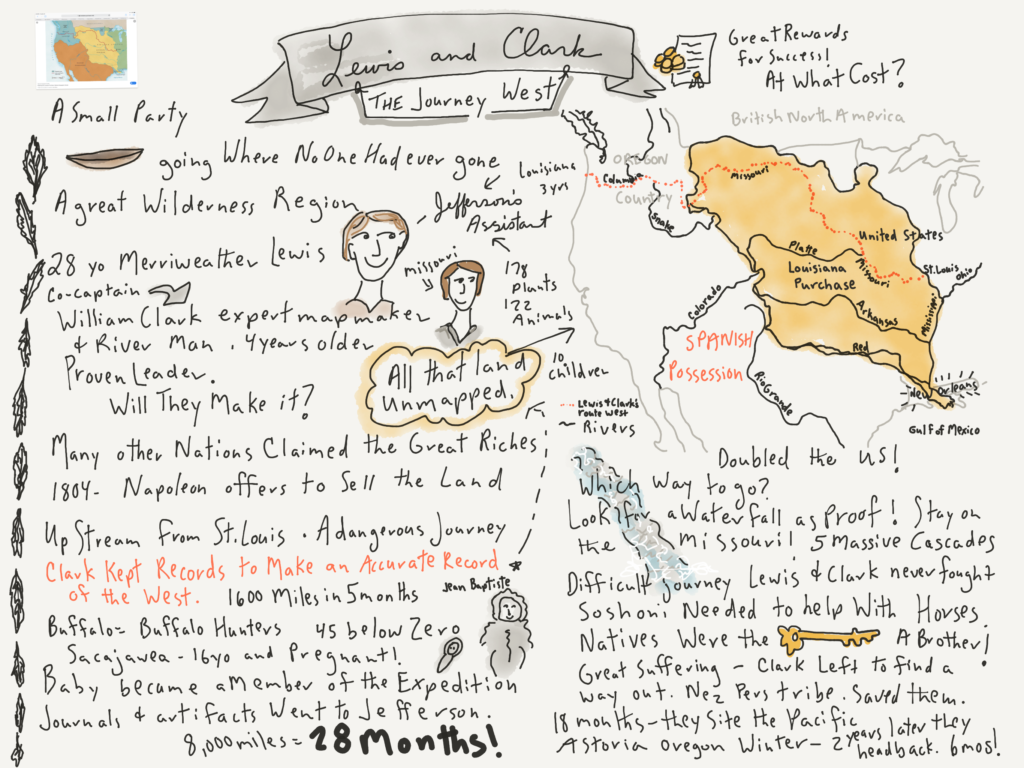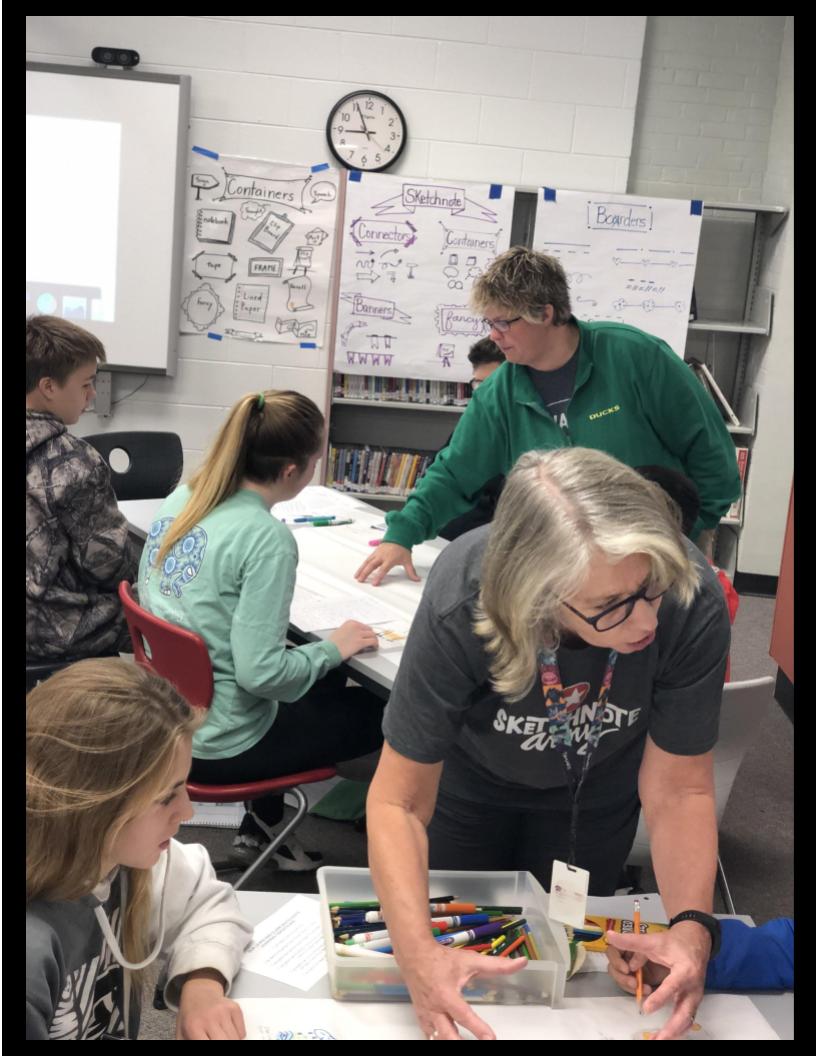Here is what I do.
Inspire
Empower
Collaborate
Support
Show up
Repeat
Working with individual teachers is one of my greatest joys. When that collaboration is spearheaded by someone who has attended one of my trainings it is doubly rewarding. That is what happened at a local middle school recently after a district-wide training sparked personal interest. Shelly was enamored by Sketchnoting/Visual Notetaking after participating in a 3 hour workshop for media specialists. 
Call she did.
A social studies teacher took the bait and declared that Sketchnoting would be a perfect addition to their study of Lewis and Clark and Westward expansion. My resources did the trick with introducing sketchnoting. Shelly facilitated the introduction to sketchnoting in individual classes, but for phase two I was asked to facilitate live sessions to deepen student learning.
In advance of my visit I asked Ms. Brown, the content area teacher for as much background knowledge as possible. I also asked her to identify the objective for our lesson. She sent me her learning targets, key vocabulary and important events, and also a link to a Youtube video that was to be used as both scaffold and support. I watched the video and made a sketchnote to share. I also researched the expedition through primary source journal entries from which I created an icon sheet as reference.

 We started with brainstorming key vocabulary terms. Students were asked to share ideas for which terms spoke to them for complete understanding of the unit. Of these, their teacher selected the key terms (at first this was done randomly, then we had the teacher select the most important remaining terms for exploration). Many students chose the same terms. We completed graphic jams for the selected terms, about 4 per class meeting, moving the sticky notes to charts around the room. We then invited those whose term was selected to come view the images to choose the most effective icons. Listening to 8th graders debate the merits of a collection of icon sketches was delightful. Their reasoning and thought process spread laughter and enthusiasm in each group. The sketches filled up the space acting as anchor charts for the active learning part of the class time.
We started with brainstorming key vocabulary terms. Students were asked to share ideas for which terms spoke to them for complete understanding of the unit. Of these, their teacher selected the key terms (at first this was done randomly, then we had the teacher select the most important remaining terms for exploration). Many students chose the same terms. We completed graphic jams for the selected terms, about 4 per class meeting, moving the sticky notes to charts around the room. We then invited those whose term was selected to come view the images to choose the most effective icons. Listening to 8th graders debate the merits of a collection of icon sketches was delightful. Their reasoning and thought process spread laughter and enthusiasm in each group. The sketches filled up the space acting as anchor charts for the active learning part of the class time.
Students worked in groups of 4 or 5, each group was given a large piece of paper. Students were asked to use their learning targets and their notes to come up with an image that would best represent their learning. After 5 minutes, the students rotated clockwise to view and investigate the sketch of their peer – adding to the drawing, clarifying a connection, or commenting on the importance of the image. The rotations continued till all students were back at their own original drawing. Once there, students evaluated the additions of their peers and finalized the learning target/objective from which they began.


Groups then evaluated the whole poster, adding connectors or borders where necessary and showing the interactive fluidity of their work. At this point we instructed them to come up with one main idea that best represented their results and write that in the center if it was not already noted. The final products were posted on the walls of the room and a gallery walk ensued.
As an exit ticket, students were asked for one word to describe the visual review and their learning: Educational, good, exhilerating, amazing, decent, extraordinary, surprising, beautiful, challenging, lovely, awesome, glorious, neat, interesting, fantastic, memorable, informational, enthusiastic, creative, informative, artistic, reminding, collaboration, art, fantastic, imagination, creative, smart, exciting, spectacular, intriguing, education, communication, contributing, interesting, alright, responsibility, engaging, adventurous, special, expression, were some of the words shared. Wouldn’t you want to engage in a lesson that could claim an adjective such as these? The students were going to continue the path during their next unit of study. Teacher empowered, media specialist the conduit, Peacedoodle the delivery.
Onward.

